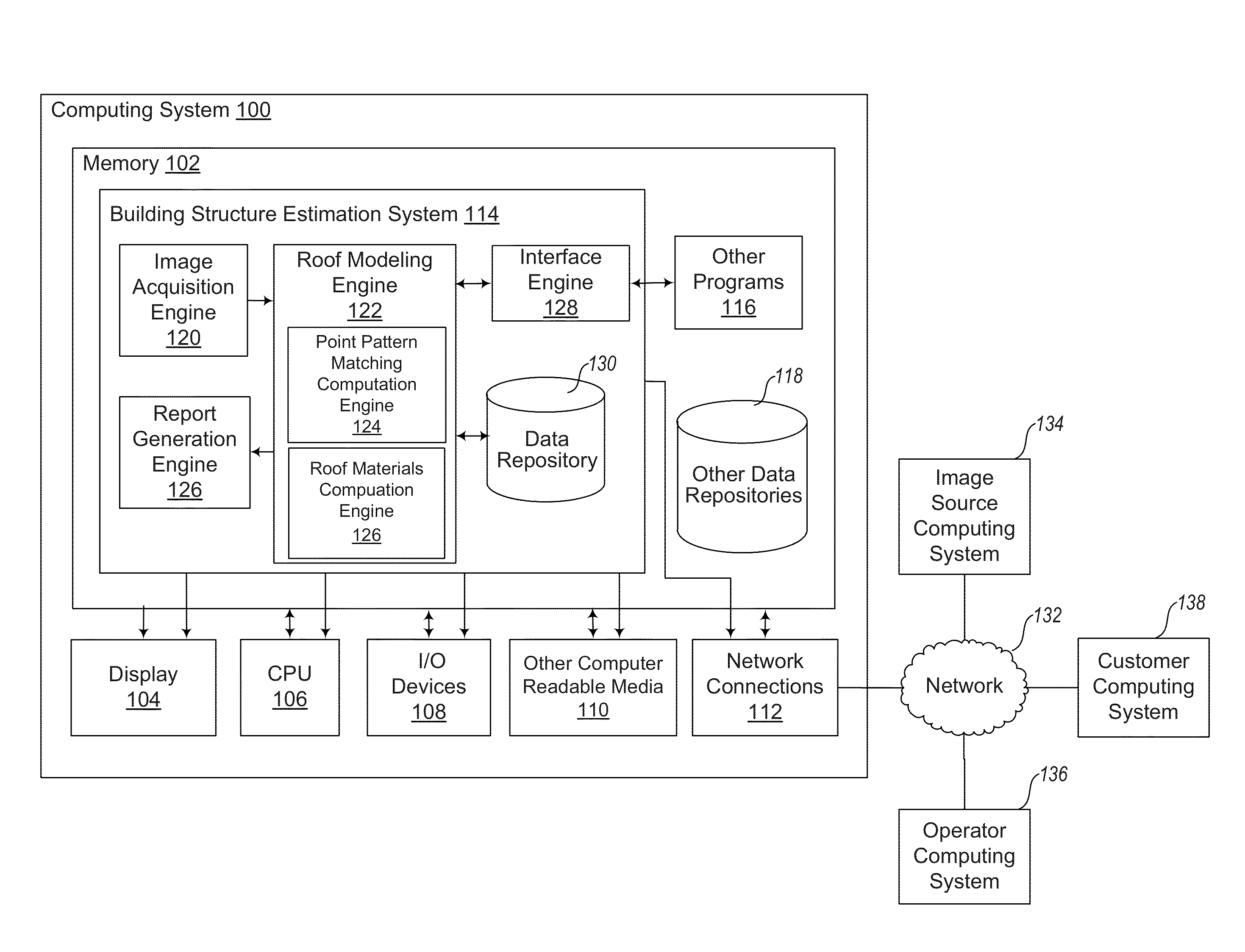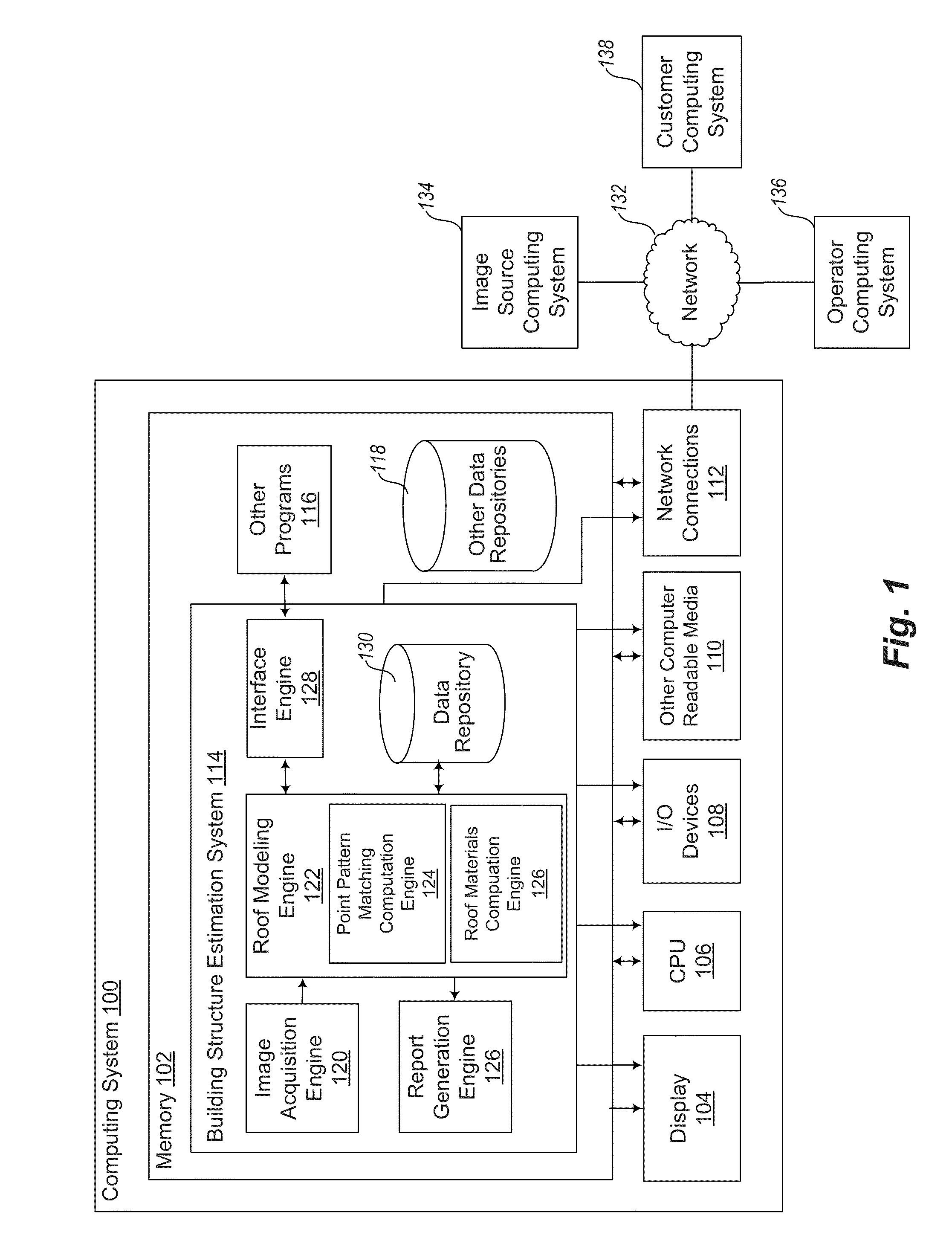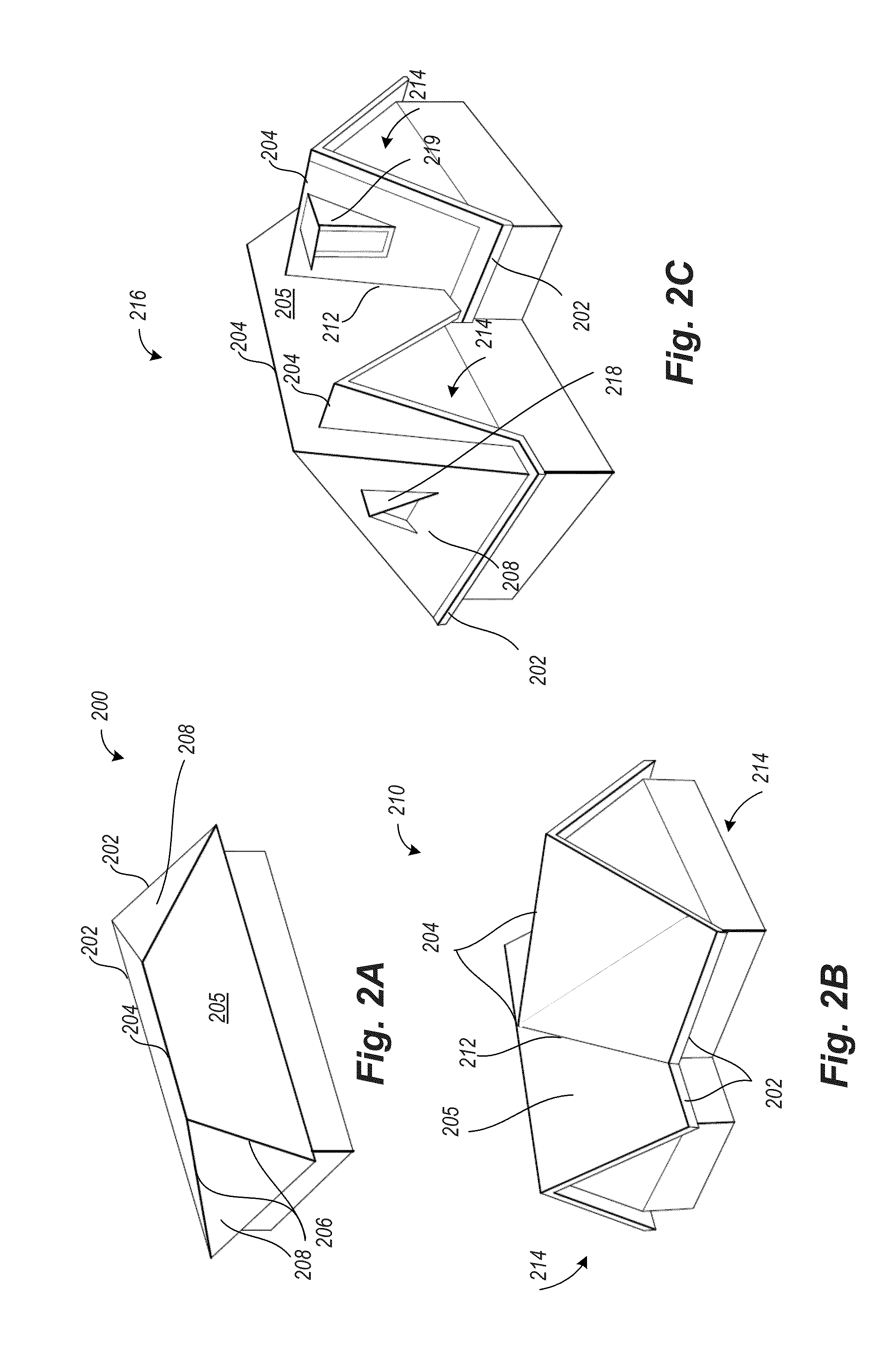Building materials estimation
a technology of building materials and construction materials, applied in the field of automatic systems and methods, can solve the problems of substantial damage, substantial delay in roof completion, and save considerable cost and time, and achieve the effect of accurately calculating material costs and improving roof measurements
- Summary
- Abstract
- Description
- Claims
- Application Information
AI Technical Summary
Benefits of technology
Problems solved by technology
Method used
Image
Examples
Embodiment Construction
[0032]Embodiments described herein provide enhanced computer- and network-based methods, techniques, and systems for building structure estimation employing perspective imagery from independent sources.
[0033]FIG. 1 is an example block diagram of a computing system 100 for practicing embodiments of the statistical point pattern matching method described herein, and for practicing embodiments of a building structure estimation system based on the point pattern matching, according to one embodiment.
[0034]One or more general purpose or special purpose computing systems may be used to implement the computer- and network-based methods, techniques, and systems for point pattern matching computation described herein and for practicing embodiments of a building structure estimation system based on the point pattern matching. More specifically, the computing system 100 may comprise one or more distinct computing systems present at distributed locations. In addition, each block shown may repre...
PUM
 Login to View More
Login to View More Abstract
Description
Claims
Application Information
 Login to View More
Login to View More - R&D
- Intellectual Property
- Life Sciences
- Materials
- Tech Scout
- Unparalleled Data Quality
- Higher Quality Content
- 60% Fewer Hallucinations
Browse by: Latest US Patents, China's latest patents, Technical Efficacy Thesaurus, Application Domain, Technology Topic, Popular Technical Reports.
© 2025 PatSnap. All rights reserved.Legal|Privacy policy|Modern Slavery Act Transparency Statement|Sitemap|About US| Contact US: help@patsnap.com



